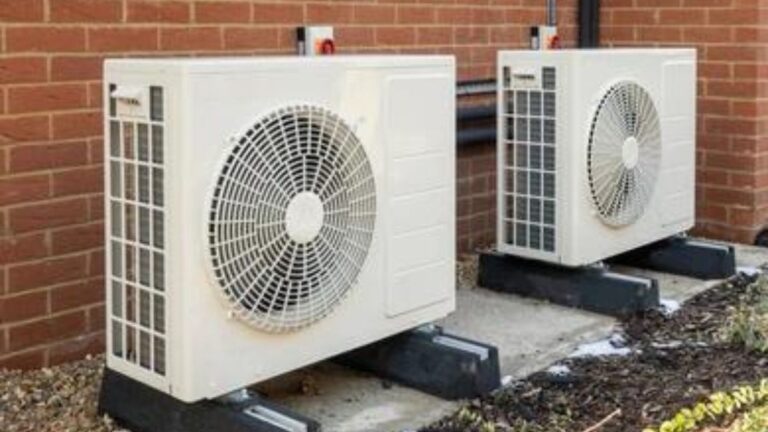Assume that a homeowner recently got a brand-new air source heat pump as an update. This eco-friendly method will save you money on energy costs and leave less pollution behind. This was made possible by an air source heat pump grant. But, as with any significant investment in home infrastructure, questions about maintenance come up right away. How much work does it take to keep this new method working well and efficiently? It’s essential to know how to maintain an air source heat pump to last as long as possible and work at its best.
This information will discuss all the different parts of maintaining an air source heat pump, giving you complete assistance for keeping your system in great shape.
Air Source Heat Pumps
The air source heat pump extracts heat from the outside air to heat your home and provide hot water. It functions efficiently even in lower temperatures, making it a reliable and eco-friendly alternative to traditional heating systems.
Regular Maintenance Tasks
Homeowners should perform a few repair tasks on their air source heat pump daily to ensure it works well. These tasks are usually easy and can be done without professional help, but it’s still a good idea to get professional check-ups occasionally.
1. Checking the Air Filters
Frequency: Monthly
Task: Air filters in your heat pump must be checked, cleaned, or replaced regularly. Dirty filters can reduce efficiency and increase energy consumption. Simply remove the filter, clean it according to the manufacturer’s instructions, or replace it if necessary.
Benefits: Clean filters improve airflow and system efficiency, reducing energy costs and extending the system’s lifespan.
2. Inspecting the Outdoor Unit
Frequency: Monthly
Task: The heat pump’s outdoor unit should be free from debris such as leaves, dirt, and snow. Regularly inspect the unit and clear any obstructions that might impede airflow.
Benefits: Ensures optimal airflow and prevents potential damage to the unit, maintaining efficient operation.
3. Checking for Refrigerant Leaks
Frequency: Annually
Task: Refrigerant is essential for the heat pump’s operation. Although homeowners can’t fix refrigerant leaks, they can listen for signs like hissing sounds or less efficient heating and call a professional if they hear or see them.
Benefits: Prevents system inefficiencies and potential damage, ensuring the heat pump operates correctly.
4. Cleaning the Coils
Frequency: Annually
Task: To maintain efficiency, the coils in both the indoor and outdoor units should be cleaned. Over time, dust and dirt can accumulate, reducing the system’s ability to transfer heat.
Benefits: Clean coils make heat exchange more efficient, which lowers energy use and raises total performance.
Professional Maintenance
While the user can perform most of the regular maintenance, some jobs should be done by a professional to ensure the system stays in great shape.
1. Annual Professional Inspection
Frequency: Annually
Task: Schedule a professional inspection once a year. An expert will check the whole system, including the amounts of refrigerant, the electrical links, and how well it works overall.
Benefits: Early discovery of possible problems ensures that fixes are made before they get worse. It also maintains system efficiency and prolongs the lifespan of the heat pump.
2. Ductwork Inspection and Cleaning
Frequency: Every 3-5 years
Task: Have the ducts inspected and cleaned periodically for systems with ductwork. This prevents dust buildup and ensures efficient airflow throughout the home.
Advantages: Clean ductwork improves the quality of the air inside and the system’s efficiency, which means better performance and lower energy bills.
Seasonal Maintenance Tips
Different seasons bring different maintenance needs for an air source heat pump. Here are some tips to keep your system running smoothly year-round.
Spring and Summer
Inspect for Winter Damage: Check the outdoor unit for any damage caused by winter weather and ensure it is free from debris.
Test Cooling Function: As temperatures rise, test the cooling function to ensure it’s working efficiently. Schedule repairs if needed.
Autumn and Winter
Clear Debris: Regularly clear snow, leaves, and ice from the outdoor unit to maintain airflow and efficiency.
Adjust Settings: Ensure the heat pump is set to heating mode and adjust the thermostat to a comfortable level.
Conclusion
Air source heat pumps need to be serviced and inspected by a professional every so often. A grant for an air source heat pump makes it easy for homes to enjoy this eco-friendly and efficient system. These tips will help you keep your heat pump in good shape for years. Embrace these practices, and enjoy a warm, comfortable, cost-effective home environment.
